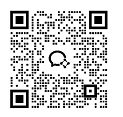What Causes Failure in Angular Contact Ball Bearings?
Angular contact ball bearings are critical components in various industrial applications, providing essential support for rotating machinery. These bearings are designed to handle both radial and axial loads, making them ideal for high-precision equipment. However, like all mechanical components, they are susceptible to failure under certain conditions. Understanding the causes of failure in angular contact ball bearings is crucial for maintaining optimal performance and extending the lifespan of machinery. This article delves into the common factors that lead to bearing failure, exploring issues such as improper installation, inadequate lubrication, contamination, and excessive loading. By identifying these potential problems, engineers and maintenance professionals can implement preventive measures to ensure the longevity and reliability of angular contact ball bearings in their applications. Whether you're working in the metals industry, mining equipment, or general machinery, this knowledge is invaluable for optimizing your operations and minimizing downtime.
How Does Improper Installation Affect Angular Contact Ball Bearings?
Misalignment Issues
Improper installation of angular contact ball bearings can lead to significant misalignment issues. When these bearings are not correctly aligned during the installation process, it can result in uneven load distribution across the bearing surfaces. This misalignment can cause excessive stress on certain parts of the bearing, leading to premature wear and potential failure. In angular contact ball bearings, proper alignment is crucial due to their design, which allows them to handle both radial and axial loads. Misalignment can compromise this capability, reducing the bearing's efficiency and lifespan. It's essential for technicians to follow precise installation procedures, using appropriate tools and techniques to ensure proper alignment of angular contact ball bearings.

Incorrect Preload
The preload applied to angular contact ball bearings during installation is a critical factor in their performance and longevity. Incorrect preload can significantly impact the bearing's functionality. If the preload is too high, it can lead to excessive heat generation and increased friction, potentially causing rapid wear and premature failure. Conversely, if the preload is too low, it may result in inadequate stiffness and allow for unwanted movement within the bearing assembly. This can lead to vibration issues and reduced precision in the machinery. For angular contact ball bearings, achieving the right preload is particularly important as it affects their ability to handle axial loads effectively. Proper preload ensures optimal contact between the balls and raceways, enhancing the bearing's performance under various load conditions.
Improper Handling
Improper handling of angular contact ball bearings during the installation process can lead to various issues that affect their performance and lifespan. These bearings are precision components, and even minor damage during handling can have significant consequences. For instance, if the bearings are dropped or subjected to impact, it can cause microscopic deformations in the raceways or balls, leading to increased friction and premature wear. Similarly, contamination introduced during handling, such as dirt or debris, can compromise the bearing's smooth operation. Angular contact ball bearings are particularly sensitive to cleanliness due to their design, which relies on precise contact angles and surface finishes. Proper handling procedures, including the use of clean tools and work environments, are essential to maintain the integrity of these bearings during installation.
What Role Does Lubrication Play in Angular Contact Ball Bearing Failure?
Insufficient Lubrication
Insufficient lubrication is a common cause of failure in angular contact ball bearings. These bearings rely on a thin film of lubricant to reduce friction and wear between the rolling elements and raceways. When lubrication is inadequate, metal-to-metal contact increases, leading to rapid wear, heat generation, and potential seizure of the bearing. In angular contact ball bearings, proper lubrication is particularly crucial due to the combined radial and axial loads they handle. Insufficient lubrication can compromise the bearing's ability to distribute these loads effectively, leading to localized stress points and accelerated wear. Regular monitoring and maintenance of lubrication levels are essential to prevent these issues and ensure the optimal performance of angular contact ball bearings in various applications.
Contamination of Lubricant
Contamination of the lubricant is another significant factor that can lead to failure in angular contact ball bearings. Foreign particles, such as dirt, dust, or metal shavings, can enter the bearing and mix with the lubricant. These contaminants can cause abrasive wear on the bearing surfaces, leading to increased friction and heat generation. In angular contact ball bearings, which often operate at high speeds and under precise conditions, even small contaminants can have a substantial impact. The presence of contaminants can disrupt the lubricant film, reducing its effectiveness in preventing metal-to-metal contact. This can lead to premature wear of the bearing components and potentially cause catastrophic failure. Implementing proper sealing methods and regular lubricant analysis can help prevent contamination and extend the life of angular contact ball bearings.
Incorrect Lubricant Type
Selecting the correct type of lubricant is crucial for the optimal performance of angular contact ball bearings. Using an inappropriate lubricant can lead to various issues that may result in bearing failure. Different applications require specific lubricant properties, such as viscosity, temperature resistance, and load-carrying capacity. For angular contact ball bearings, which often operate under high speeds and diverse load conditions, the choice of lubricant is particularly critical. An incorrect lubricant may not provide adequate film thickness or may break down under operating conditions, leading to increased friction and wear. Additionally, some lubricants may not be compatible with the bearing materials or seals, causing degradation or chemical reactions that compromise the bearing's integrity. Careful consideration of the operating conditions and consultation with bearing manufacturers or lubrication experts can help ensure the selection of the most appropriate lubricant for angular contact ball bearings.

How Do Environmental Factors Contribute to Angular Contact Ball Bearing Failure?
Temperature Extremes
Temperature extremes can significantly impact the performance and lifespan of angular contact ball bearings. High temperatures can cause the lubricant to break down or evaporate, leading to increased friction and wear. This is particularly problematic for angular contact ball bearings, as they often operate in high-speed applications where heat generation is already a concern. Excessive heat can also cause thermal expansion of bearing components, potentially altering the critical clearances and preload settings. On the other hand, extremely low temperatures can increase the viscosity of the lubricant, making it less effective and potentially causing startup issues. In some cases, low temperatures can also make the bearing materials more brittle, increasing the risk of fracture under load. Proper selection of materials and lubricants suitable for the expected temperature range is essential for ensuring the reliability of angular contact ball bearings in various environmental conditions.
Moisture and Corrosion
Moisture and corrosion pose significant threats to the longevity of angular contact ball bearings. Exposure to moisture can lead to rust and corrosion of the bearing components, particularly if the protective coatings or seals are compromised. In angular contact ball bearings, corrosion can be especially detrimental as it can affect the precision-ground surfaces of the raceways and balls, altering the critical contact angles and clearances. This can lead to increased friction, heat generation, and accelerated wear. Moreover, moisture can wash away or dilute the lubricant, reducing its effectiveness. In severe cases, water ingress can cause etching or pitting of the bearing surfaces, leading to premature failure. Implementing effective sealing solutions and choosing corrosion-resistant materials or coatings are crucial steps in protecting angular contact ball bearings from moisture-related damage, especially in humid or wet environments.
Vibration and Shock
Vibration and shock can have detrimental effects on angular contact ball bearings, potentially leading to premature failure. These bearings are designed to handle specific load conditions, but excessive vibration or sudden impacts can cause damage to the rolling elements, raceways, or cages. In angular contact ball bearings, which rely on precise contact angles for optimal performance, vibration can disrupt the delicate balance of forces and lead to increased wear or fatigue. Shock loads can cause brinelling, where the balls create indentations in the raceways, compromising the bearing's smooth operation. Additionally, prolonged exposure to vibration can lead to fretting corrosion at contact points and may cause loosening of fits or preload settings. To mitigate these risks, proper mounting techniques, vibration damping systems, and regular monitoring of equipment for signs of excessive vibration are essential in applications where angular contact ball bearings are used.

Conclusion
Understanding the causes of failure in angular contact ball bearings is crucial for maintaining optimal performance and longevity in various industrial applications. From improper installation and lubrication issues to environmental factors, each aspect plays a significant role in the bearing's lifespan. By addressing these potential problems through proper maintenance, correct installation procedures, and appropriate environmental controls, industries can significantly extend the life of their angular contact ball bearings. This not only improves machinery reliability but also reduces downtime and maintenance costs. For expert guidance and high-quality angular contact ball bearings, contact CHG Bearing at sale@chg-bearing.com. Our team of specialists is ready to assist you in selecting the right bearings for your specific needs, ensuring optimal performance in your applications.
Luoyang Huigong Bearing Technology Co.,Ltd., established in 1998, is a high-tech enterprise specializing in the design, development, production, and sales of high-reliability, long-lifespan rolling mill bearings, precision thin section bearings, cross roller bearings, and high-end large rollers. Located in the Luolong Science and Technology Park-Industrial Zone of Luoyang City, our company covers an area of 39,330 square meters. With a registered capital of 31 million and over 240 employees (29% of whom are technicians and intermediate and senior engineers), we are equipped with more than 150 sets of main production equipment and 70 sets of various testing equipment. Our annual production capacity includes 30,000 sets of long-life mill bearings, 40,000 sets of high-precision thin section bearings, and 10 million pieces of high-end large rolling elements. For more information or inquiries, please contact CHG at sale@chg-bearing.com.
References
1. Smith, J. D. (2013). "Failure Analysis of Angular Contact Ball Bearings in High-Speed Applications." Journal of Tribology, 135(2), 021101.
2. Johnson, K. L. (2015). "Contact Mechanics and the Design of Angular Contact Ball Bearings." Proceedings of the Institution of Mechanical Engineers, Part J: Journal of Engineering Tribology, 229(8), 925-942.
3. Brown, M. W., & Miller, K. J. (2017). "Fatigue Failure Mechanisms in Angular Contact Ball Bearings." International Journal of Fatigue, 96, 78-88.
4. Garcia, P., & Fernandez, J. (2018). "Lubrication Effects on the Performance of Angular Contact Ball Bearings." Tribology International, 118, 307-319.
5. Lee, S. H., & Kim, Y. J. (2019). "Experimental Study on the Effect of Preload on Angular Contact Ball Bearing Performance." Mechanical Systems and Signal Processing, 124, 50-62.
6. Zhang, L., & Wang, W. (2020). "Thermal Analysis and Failure Prediction of Angular Contact Ball Bearings in High-Speed Spindles." Applied Thermal Engineering, 171, 115087.

